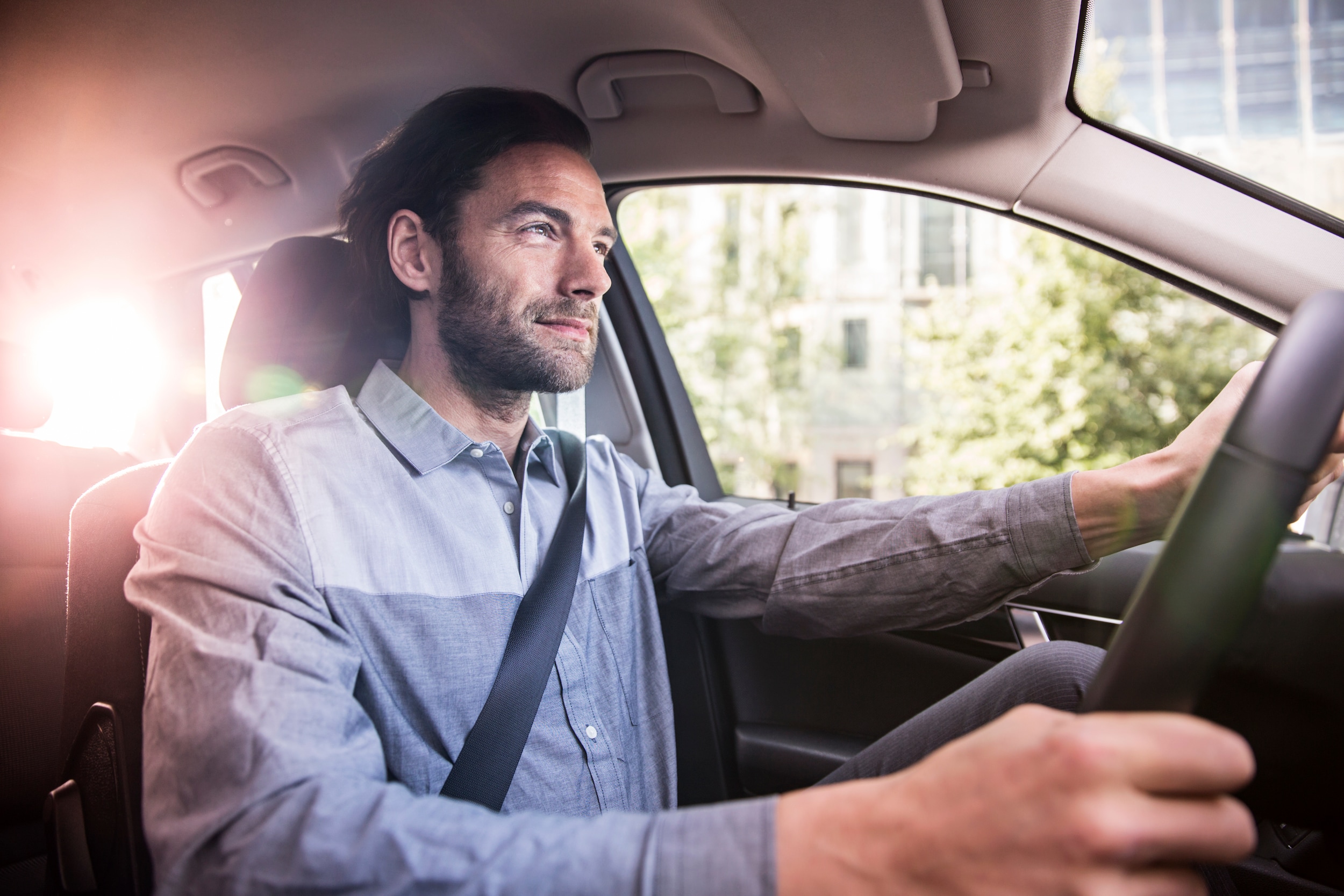
Steer Clear of Distracted Driving

Who's Calling Me?
We see evidence of distracted driving every day. From the people who are on their cellphones or even texting while driving to eating a sandwich, putting on mascara or lip gloss while driving, it seems that folks are doing all kinds of things rather than focusing on driving safely. According to the Center for Disease Control (CDC), every day, eight people in the United States are killed in automobile-related crashes that are reported to involve a distracted driver.
Types of Distracted Driving
Distracted driving is basically anything that takes your attention away from the road and from driving safely. A few examples include adjusting the radio or navigation system, eating or drinking, and being distracted by your dog or kids. But the worst form of distraction comes from texting while driving or talking on a cellphone. Talking on the phone and phone use while driving has become a big problem.
Basically, distracted driving comes in three flavors:
- Taking your eyes off the road
- Taking your hands off the wheel
- And the worst is taking your mind off your driving.
Thirty years ago, the biggest distractions that a driver might face involved the car radio, eating fast food, or keeping tabs on the family dog. But cellphones upped the ante on our level of distraction… big time. Keep in mind that there are other technologies today that are equally as distracting as our smartphones. We're talking laptops, tablets, smart watches, virtual assistants such as Siri or Alexa as well as all the built-in tech on your infotainment touchscreens, navigation systems and driver assist technology. Put all those distractions together and it's a miracle we can drive at all! A study by AAA says that over 70 percent of the infotainment systems in vehicles today are making "high" to "very high" visual and cognitive demands on drivers. We all need to curb our use of these devices while driving.
Statistics
The National Highway Traffic Safety Administration (NHTSA) reports that at any given moment during daylight hours, over 800,000 vehicles are being operated by drivers who are simultaneously operating a cellphone or other hand-held device. Each year, over 3,100 people are killed and an estimated 400,000 are injured in crashes involving a distracted driver. One in five of the people who die are not in vehicles. They were pedestrians who were walking or riding a bike when hit by a distracted driver.
According to the AAA Traffic Safety Culture Index, 81 percent of respondents said that driving while exchanging text messages or email is a serious threat to safety and that they find such behavior unacceptable. Yet 40 percent of those same respondents in the study reported engaging in those activities themselves.
A similar study by the CDC discovered that over 30 percent of drivers who responded had read or sent a text or email while driving during the previous 30 days, and nearly 70 percent admitted to talking on a cellphone while driving.

Teen Drivers Most at Risk
Nearly 25 percent of distracted drivers involved in fatal crashes are young adults between the ages of 20 and 29. Nine percent of all teens who die in crashes involve distracted driving. Among drivers involved in fatal crashes, drivers aged 15 to 19 are more likely to be distracted than drivers of any other age.
The CDC monitors health risk behaviors among U.S. high school students, including texting or emailing while driving. They found that 39 percent of high school students who drove in the past 30 days, texted or emailed while driving on at least one of those days. This behavior is more prevalent with older students and is most common among white students. Texting while driving is as common among students with good grades as those with poor grades.
Of the students in the study, those who reported texting while driving were also more likely to not always wear seat belts, ride with a driver who had been drinking alcohol, and are more likely to drive after drinking alcohol themselves. In fact, an NHTSA study found that 20 to 30 percent of drivers between the ages of 18 and 34 reported that texting does not affect their ability to drive.
What You Can Do
What can we all do to decrease distracted driving? Start with yourself. Don't multitask while driving. That includes everything from:
- Adjusting mirrors
- Changing stations on the radio
- Eating & drinking
- Making phone calls, or texting. In fact, it is best to put your phone away while driving. Get rid of the number one distraction by placing it in the glove compartment. You can always return a call or text once you get where you are going.
If you are a passenger in a car in which the driver is distracted, say something! It is okay to tell the driver to focus on the road. You can also assist the driver by taking calls for him or her. You can also act the copilot and navigate the route.
If you are the parent of a young driver, take the time to talk to your teen about the rules and responsibilities involved in driving. Share the statistics in this article. Remind them that driving requires the driver's full attention at all times. Make sure they stow their phones before setting off down the road. Let them know that auto insurance carriers are hard on distracted drivers. Car accidents where distracted driving is a factor can cause denial of coverage and rate increases of up to 45 percent.

Eliminating Risky Behaviors Behind the Wheel
The NHTSA is dedicated to getting rid of risky behaviors on our nation's roads. It educates Americans about the dangers of distracted driving and partners with local police to enforce laws to keep us safe. The NHTSA provides federal investments aimed at driving strategies that address each state's needs. This includes a national advertising campaign called U Drive. U Text. U Pay. They have also devised a pledge to make the commitment to drive phone-free. You'll find it here. Remember that drivers who talk or text while driving are 23 times more likely to be involved in a crash.
Lithia Cares
Look, we have all been involved in distracted driving one form or another at some point. The bottom line is to be smart about this. Taking an important phone call while driving is not worth dying over. Each and every day, you can decide to make a positive difference just by paying attention while driving. Know your state's laws on distracted driving. The Insurance Institute for Highway Safety (IIHS) provides a list of what is required by state. Remember to set a good example for your teen driver by always keeping your eyes on the road and hands on the wheel.
At Lithia Motors, we want you as a customer for life. We care about you and your family and we want you to be safe. Let's all work together to focus on driving and keep our eyes on the road and our hands on the wheel.


